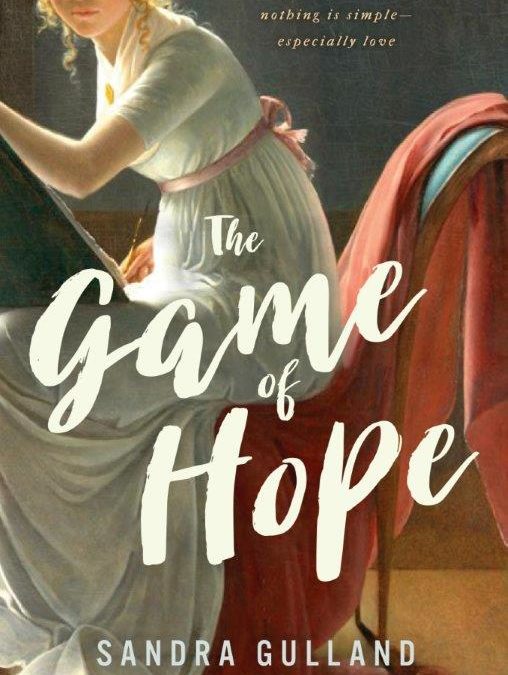
by Sandra Gulland | Apr 15, 2018 | Adventures of a Writing Life, On Plot, On Research, Publication, The Game of Hope, The Shadow Queen, The Writing Process, Young Adult Literature |
On November 2, 2011 (the day before my birthday), my agent, Jackie Kaiser, called to tell me that I’d been made a very tempting offer by Penguin to write two YA novels. One was to be about Josephine’s daughter Hortense, and the second was to be of my choosing.
My husband and I were in Mexico at the time, and two nights before I’d told him that I would never again contract to write a book “in advance.” I simply found it too stressful.
So the timing was a bit ironic. After Jackie’s call, I told my husband, “I’ve just been made an offer I can’t refuse.” Jackie had emailed me a photo of the box the offer had arrived in. Inside were the contract details and chocolates. How charming was that?

Even so, I thought about it carefully for two months. It takes me years (and years!) to write a novel, and I have to feel passionate about it. I have to fall in love with it. So I reread books about Hortense and covered our dining room table with plot points on index cards, considering. I needed to see if there was a story there, an enchanting story about Hortense’s teen years.
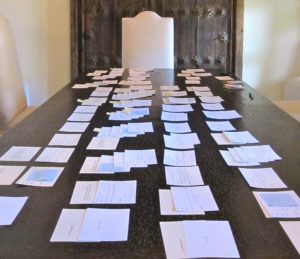
And there was. And it was one I very much wanted to write. By February 9, 2012, I had made up my mind. I would accept the offer. I would write a Young Adult novel about Hortense …
… although not immediately. I was on draft 6.1 of what I was then calling This Bright Darkness, soon to become The Shadow Queen. Plus, as I noted in that blog post of Feb. 9:
Somehow, I feel that I can do all of this all at once: finish This Bright Darkness, begin another adult novel set in the 17th century, write two YAs and a short novel for GoodReads, as well as launch my own e-book imprint.
(Reality has never been my strong suit.)
The Shadow Queen was published and my e-book imprint launched, but the “other adult novel set in the 17th century” had to be put on the back burner and the short novel for GoodReads was regretfully abandoned. Writing a novel requires full attention.
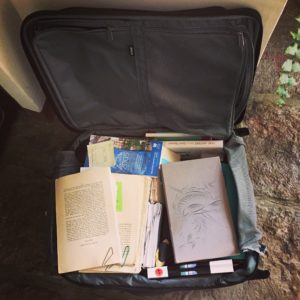
Soon I was carting research books on Hortense back and forth from Mexico to Canada.
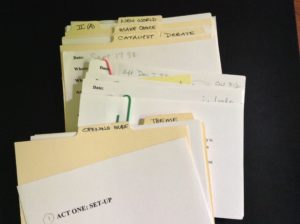
I organized my plot cards, shuffled and re-shuffled them.
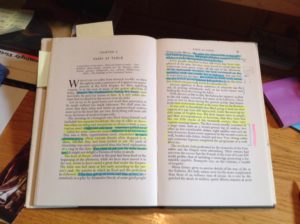
I researched like crazy.
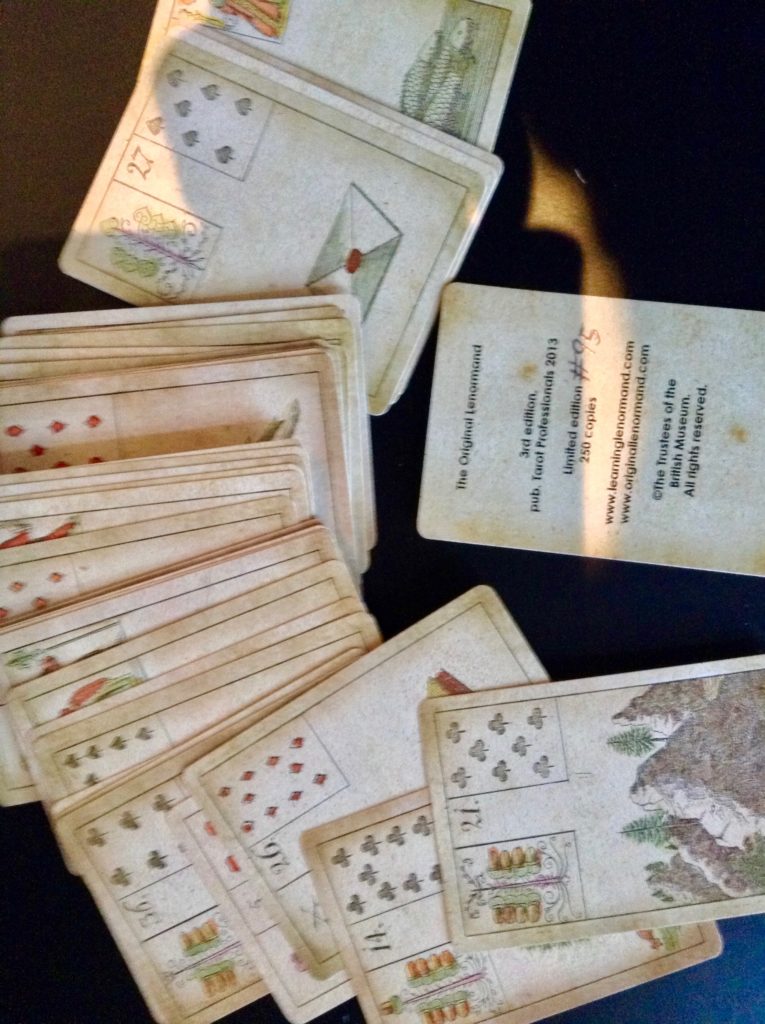
I bought a deck of The Game of Hope and began exploring. (Fun!)
On November 2, 2013, a full two years after receiving the offer from Penguin, I began the first draft.

This is draft 1.7 — that is, the 7th draft of the 1st draft.
Over the next four years, I made two research trips to France.
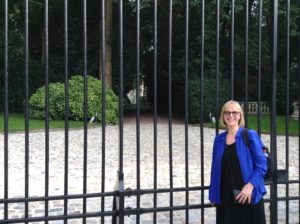
Here I am at the gates to Mortefontaine, the country estate of Napoleon’s brother Joseph.

This is a statue of Hortense at her home of exile in Arenenberg, Switzerland, overlooking Lake Constance, now a delightful museum devoted to her memory.

This is a photo of what remains of Madame Campan’s wonderful school in Saint-Germain-en-Laye.
Over time, I had the requisite stack of nine drafts it takes me to write a book.
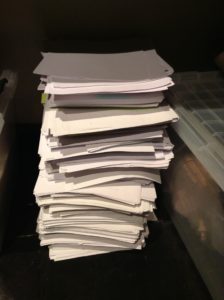
During the four years it took to write The Game of Hope, it went from being a novel told in the present tense to (at a fairly late stage) a novel told in the past tense. The title changed many, many times, and settled, finally, and happily, on The Game of Hope. The cover changed many times as well.

The Game of Hope, Hortense’s story, is now a book. For real. I’ve yet to hold it in my hands, but I will soon, in Toronto on May 1, the official Canadian publication day.
The amazement I feel about this long and magical process never grows old.
SaveSave

by Sandra Gulland | Apr 1, 2018 | Adventures of a Writing Life, Podcasts, Promotion, Resources for Writers, Young Adult Literature |
I’ve become very fond of a podcast about Young Adult lit called Kidlit Drink Night. They always make me laugh and I end up making lots of notes about books, movies and TV series to look into. They call themselves “Superfriends,” which is sweet. There is a lot of laughing. They share a love of YA Lit, and an often bizarre drink for the night, which is not always met with approval. :-) They end their once-a-month sessions with the question, “What are you crushing on?” I love that.
So: What am I crushing on right now? (Other than the Kidlit Drink Night podcast.)
So: what are you crushing on?

by Sandra Gulland | Mar 26, 2018 | Adventures of a Writing Life |
Because I publish only every four or five years, in spite of my best intentions — in spite of being at my desk virtually every day for hours! — I forget how fraught the publication process is.
The first sign of “nerves” is going into a tizzy over the cover. I virtually never go into tizzies, but this almost always happens over a cover! And then into a tizzy again over the jacket copy: is it ever just right? And then there are the discovered typos that must be corrected right up until the hour before the book, my baby, hits the press. (I imagine this as a violent collision, not a birth — how strange is that?)
And then: a long, long moment of silence (please, as for a memorial). The book is in print. My job is done.
Ha. Not quite. What’s to come is the scariest part, and that’s the worry, the thoughts of all the ways in which The Novel could have been better. (For it continues to live in motion in my mind.)
The memory of how rushed writing it had been at the end, and how — no doubt — readers will be disappointed. It will be beautiful to behold, I know — such a lovely cover now! — but will it enchant?
Enchantment does not come easy, especially these days.
And then, among the early reviews, I read:
I enjoyed this book so much that I’ve read it twice already!
This is from “Leslie U,” whom I do not know. I want to print this sentence on a banner and pin it over my desk. (Maybe I will.) It’s what I aspire to!
I breathe. Maybe it’s going to be all right. There will be readers who like The Game of Hope. Not everyone, I know, but some.
Leslie U goes on to say:
Being a fan of the Josephine B. Trilogy, I have been anticipating this novel from Ms. Gulland. Her tale about the life of Josephine’s teenaged daughter Hortense and her recovery in the wake of the French Revolution is both realistic and poignant. Roommates, letters home, teenage crushes and innocence brought it to life for me. I especially enjoyed the way the Lenormand Cards were woven throughout the novel. I’ve purchased a deck to play the Game of Hope myself!
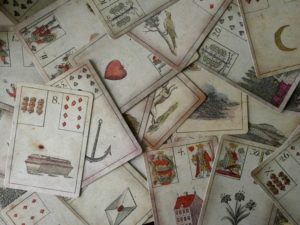
Ah, the wonderful Game Of Hope. I often cast those cards as I was writing Hortense’s story.
Maybe I should cast them now, ask: How are you doing, Hortense?
{Photo at the top is by Bank Phrom on Unsplash.}
SaveSave

by Sandra Gulland | Mar 23, 2018 | Adventures of a Writing Life |
As a blogger, I watch the ups and downs of my blogs’ attendance as closely as I used to watch my Amazon.com ratings. Thanks to Google Analytics, however, I can now find out much more than how many people are visiting my site. Through Analytics I can find out how long visitors lingered, which pages they looked at, what part of the world they are from.
But most of all, I can also find out what search words they typed into Google that led them to my little website, and in this, the fun begins. In scanning the search words, I discover what it is that that people are looking for.
And so, according to my experience, if you want people visiting your blog, here are the words you should use.

Hats for men with long hair
In a blog post about style in the Court of the Sun King, I made mention of hats and men with long hair. (The post was: “Hats and long hair: for men only?”) I was astonished to discover that quite a number of people came to this rather obscure blog on 17th-century research. They had Google searched “hats for men with long hair.” Apparently, there is a crying need! (Marketers, take note.) To name a few of the Google searches (without any corrections to grammar):
best kind of hats for long hair
hats for long haired men
hats for longer hair
hats for thick long hair
hats to wear for long hair for men
hats with hair 4 men
historic men with long hair
how do you wear a dress hat with long hair
how to wear hats with long hair
long hair and hats
long hair hat
long hair in fancy dress
men long hair with hat
men’s fashion hats for long hair
mens caps with long hair
I’ll end with one cute variation on this theme: someone searched Google for “two longhaired guys side by side.” Without hats, however. And ended up on my blog. (Such a disappointment.)
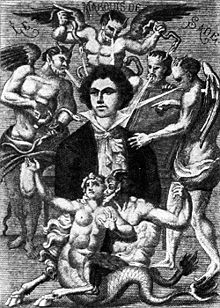
Cantharides
The second subject of interest was somewhat worrisome. I wrote a blog about the use of cantharides (Spanish fly) at the Court of the Sun King. (“Athénaïs: innocent or guilty?”) A swirl of searches resulted:
history of Spanish fly
spanish fly history
how to prepare cantharides
medical problems with spanish fly
spanish fly experience
spanish fly for horses
spanish fly tincture
Spanish fly is used as an aphrodisiac, but it can be deadly — the Marquis de Sade killed two young women in this way — and so these searches, apparently out of Africa, concerned me.

![]()
Cleavage
The third subject of universal interest — no surprise here — is cleavage. On this blog, some time ago, I wrote about “Google adventures into the history of cleavage.” My research had, surprisingly, revealed that — contrary to our expectation — aristocratic women of the 17thcentury used corsets to make them look flat. (They didn’t want to look like a milkmaid.) A number of searches mentioned cleavage, including this one, which I find intriguing: “historical cleavages in Canada.”
Last, but never least: Oprah
On a final note (this I’ve read but not tested): put the words “Oprah Winfrey” into your blog and you will be overwhelmed with visitors.
And so, to conclude, the foolproof sentence I suggest one use to attract traffic to a blog is:
Oprah Winfrey has no need for Spanish fly; her cleavage alone attracts men with long hair wearing hats.
SaveSave
SaveSave
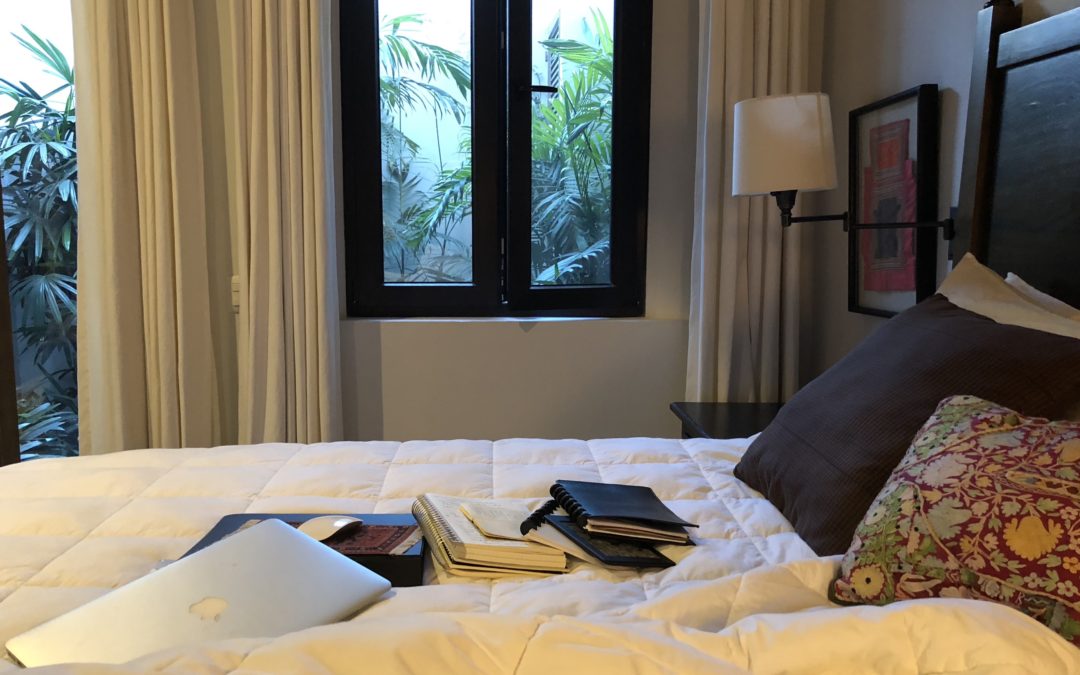
by Sandra Gulland | Mar 20, 2018 | Adventures of a Writing Life, Promotion, The Game of Hope, Work in Process (WIP) |
I’ve been bed-bound for over a week since a minor knee operation to repair a meniscus issue. I’m not going to whine about it! In fact, I’ve discovered that I’m the perfect candidate for this type of life.
On the bed beside me are:
- my Mac Air;
- my Levenger notebook (calendar etc.);
- a Circa notebook fat with my To Do lists;
- another notebook (a Semikolon Mucho Spiral Notebook for the stationery curious), where I’m thinking through The Next Novel;
- a three-ring binder for scene sheets (@ Story Genius), which I’m really using as a support for my mouse pad and mouse);
- my Kindle;
- an iPad;
- and a stack of magazines (The New Yorker, Real Simple, and Bookmarks).
Beside the bed is my walker (required for just a little longer!), a water bottle, clock, and iPhone. Moisturizer, lipstick, post-its, pencil, pen, pills. Snacks, tissue. Basic clutter.
Everything I need, in short, right where I can reach it. The only problem with this rat’s-nest life is that I can’t climb stairs (yet), can’t get up to my office.
But for now, I’m making great use of this time.
Website renovation
With every publication, a writer needs to update his/her website with information about the new book, a new media kit, author events, and a new author portrait throughout.
I didn’t have time to get an author portrait taken this year (I tried a selfie, with poor results), so I’ve used one James Brylowski took of me five years ago.
“Problem is, books are written slowly, and aging happens all of a sudden.” — from a wonderful article: The Agony and the Ecstasy of taking Author Photos.)
Having neglected my website for years, I discovered a number of problems. Fortunately, I was able to find a great website person through Fiverr.com who is helping me. We have quite a bit to do yet.
(Frankly, I don’t know how authors who publish a book a year manage.)
An important part of getting my website more reader-worthy was setting up my Media page. Following the directions of Tim Grahl (see below), I learned to code my Media page so that high-definition images would be automatically downloaded with just a click. I’m fairly stoked that I was able to do this.
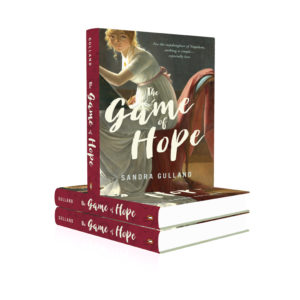
Also, on Fiverr.com, I found someone to turn the book cover of The Game of Hope into a 3D image (see above). For $5!
Easy Outreach with Tim Grahl
When it comes to marketing, I’m a fan of Tim Grahl, He’s experienced, down-to-earth and realistic. I’ve taken a few of his online courses, and they’ve always been worthwhile. Right now I’m following a new one he’s testing out, “Easy Outreach.” Basically, it’s about how to get interviewed on podcasts, but the detailed system he outlines would apply to any outreach: to blogs, vlogs, or podcasts, etc.
An important part of the process is to identify suitable podcasts and to study them before making a pitch. (I’ve discovered a number of wonderful podcasts in the process.) I’m kind of excited about putting this into practice. I ordered a USB Yeti mike, and already have one podcast interview scheduled for the fall.

I’m ready! Who knows where this might lead?
Finally learning Scrivener
I’ve promised myself that I would write The Next Novel on Scrivener. I’ve taken stabs at learning it before, but I’ve always ended up confused and frustrated. It’s a complex programme! I was on the verge of giving up when I came upon a Udemy Scrivener 3 course for Mac. It had excellent reviews so I went for it. It’s been fantastic. I have questions almost every day, and the teacher responds to every one. I take it bit by bit, and immediately apply what I’ve learned, so hopefully it will stick. I’m finally understanding why so many writers love it.
Additionally, I’ve been developing my next novel following the guidelines in Story Genius by Lisa Cron. Puzzling over how to get Cron’s scene card templates into my Scrivener project, I Googled “Story Genius Scrivener” and found a wonderful article by Gwen Hernandez on WriterUnboxed: Using Scrivener with Story Genius. Bingo! She even included a downloadable Scrivener template with scene card templates (and much more).
Watching movies, reading and listening to books and reading magazines …
And then, of course, there have been wonderful movies to watch: Three Billboards Outside Ebbing, Missouri; Call Me by Your Name; and, last night, Lady Bird. All were simply great. Of the three, I found Call Me by Your Name the most enchanting, swooningly European.
And then, of course, books, books, books! In addition to books on writing, I’m reading The Burning Girl by Claire Messud and listening, on Audible, to an amazing performance of The Hate U Give by Angie Thomas.
A hard life, eh?
SaveSave
SaveSave
SaveSave
SaveSave
SaveSave
SaveSave
SaveSave
SaveSave
SaveSave
SaveSave
SaveSave
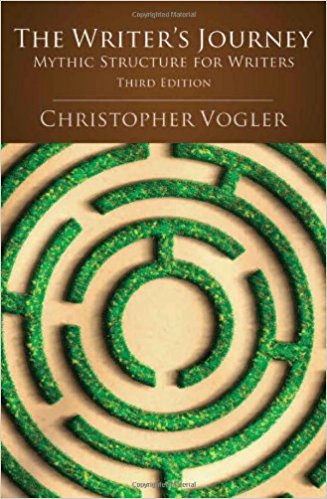
by Sandra Gulland | Mar 14, 2018 | Adventures of a Writing Life, On Character Development |
I promised in my last post on beginning a novel that I would write about creating characters.
Of course, to begin with, I have characters swarming, ideas both historical and fictional. I’ve already searched photo databanks for images that might fit. (Currently, I like using Unsplash for contemporary photos, largely because they tend to be more natural and have personality.)
These incendiary sparks are key, but at a certain point, I have to become analytical.
The first step: The Writer’s Journey
I begin this process by reviewing Part One of The Writer’s Journey; Mythic Structure for Writers, by Christopher Vogler. (This is a book on writing I highly recommend.)
I list the archetypes that traditionally most good stories need:
- Mentor
- Hero/Heroine
- Threshold Guardian(s)
- Herald
- Shapeshifter
- Ally (or Allies)
- Trickster
- Shadow(s)
And then I begin mulling over the characters in My Next Novel (working title, “Raptor Girl”). The roles can be combined into one character (i.e. Shadow and Shapeshifter). I know who my Heroine is, as well as my evil Shadow, and I’m fairly certain that the Mentor is my Heroine’s father. But looking at this list, I realized, Damn, I don’t have a Trickster! And I need one. I need someone to bring humor to this story.
So right now, at this point, I’m still mulling. But that doesn’t stop me from moving onto the next step.
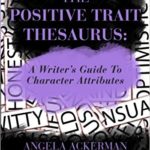
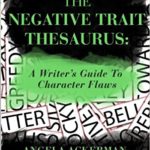

I love these thesauruses. There are more, and I’ve used them all at various stages of writing a novel. At this mulling-about-characters stage, they are a great way to brainstorm. It’s also a good way to identify where the confusions lie.
I immediately identified my heroine Molly as alert (she’s a falconer, after all), and I have a fairly good feel for her brothers and her mother, but her father and the villain remain just a little mysterious to me yet. And who the heck is the Trickster?
Is it the “Wild Woman”?
I’ve long been drawn to having a character I think of as “Wild Woman,” inspired by this amazing portrait:
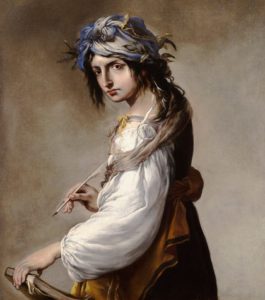
This is “Lucrezia as Poetry” by Salvator Rosa. (An amazing portrait, don’t you think?) But where would she fit in? (Speak to me, Lucrezia!) Might she be a Trickster? Quite possibly. She might well also be a Shapeshifter or even a Mentor.
I’m still in the mulling stage, but it’s time to put together files for all of these characters, including their images, their roles in the story, their positive and negative traits, and (most important) emotional wounds.
And then, step three: the fun part
Once all this begins to congeal somewhat, I will assign sun signs (unless, of course, they are already historically known), and give some thought to where they all fall on an Enneagram chart: Perfectionist? Nurturer? Achiever? Romantic? Observer? Skeptic? Adventurer? Leader? Peacemaker?
I used Enneagram for my most recent novel (The Game of Hope) and Caroline Bonaparte, the Villain, was clearly a #8 (the Boss, Leader or Challenger, depending).
I’ve just bought Believable Characters; Creating with Enneagrams by Laurie Schnebly—so I can’t report on it yet—but there are a number of helpful articles on the Net:
Additionally, if you get hooked on all this—warning: it can become a tempting diversion—there is an online 10-week course available:
Final step: integration
The final challenge will be to pull all this information together and begin to form an integrated concept of each character, filling out the details of their lives, their health, their appearance, their eccentricities.
And then, of course, let them loose in your story!
SaveSave
SaveSave
SaveSave
SaveSaveSaveSave
SaveSave
SaveSave
SaveSave
SaveSave
SaveSave
SaveSave
SaveSave
SaveSave





























